Camera traps have been a key part of the conservation toolkit for decades. Remotely triggered video or still cameras allow researchers and managers to monitor cryptic species, survey populations, and support enforcement responses by documenting illegal activities. Increasingly, machine learning is being implemented to automate the processing of data generated by camera traps.
A recent study published showed that, despite being well-established and widely used tools in conservation, progress in the development of camera traps has plateaued since the emergence of the modern model in the mid-2000s, leaving users struggling with many of the same issues they faced a decade ago. That manufacturer ratings have not improved over time, despite technological advancements, demonstrates the need for a new generation of innovative conservation camera traps. Join this group and explore existing efforts, established needs, and what next-generation camera traps might look like - including the integration of AI for data processing through initiatives like Wildlife Insights and Wild Me.
Group Highlights:
Our past Tech Tutors seasons featured multiple episodes for experienced and new camera trappers. How Do I Repair My Camera Traps? featured WILDLABS members Laure Joanny, Alistair Stewart, and Rob Appleby and featured many troubleshooting and DIY resources for common issues.
For camera trap users looking to incorporate machine learning into the data analysis process, Sara Beery's How do I get started using machine learning for my camera traps? is an incredible resource discussing the user-friendly tool MegaDetector.
And for those who are new to camera trapping, Marcella Kelly's How do I choose the right camera trap(s) based on interests, goals, and species? will help you make important decisions based on factors like species, environment, power, durability, and more.
Finally, for an in-depth conversation on camera trap hardware and software, check out the Camera Traps Virtual Meetup featuring Sara Beery, Roland Kays, and Sam Seccombe.
And while you're here, be sure to stop by the camera trap community's collaborative troubleshooting data bank, where we're compiling common problems with the goal of creating a consistent place to exchange tips and tricks!
Header photo: ACEAA-Conservacion Amazonica
- @volkankorkmaz
- | volkan
I have been working at the Underwater Association , to protect nature since 94 . Since 1992, I have been a PADI diving instructor
- 0 Resources
- 0 Discussions
- 3 Groups
- 0 Resources
- 0 Discussions
- 3 Groups
- @dombroski.julia
- | she/he/hers
- 0 Resources
- 1 Discussions
- 3 Groups
- @Mumonkan
- | he / him
Wild Me
Software Engineer for Wildlife Conservation
- 0 Resources
- 4 Discussions
- 11 Groups
Wildlife Conservation Society (WCS)

- 1 Resources
- 0 Discussions
- 6 Groups
- 0 Resources
- 0 Discussions
- 7 Groups
World Wide Fund for Nature/ World Wildlife Fund (WWF)

- 0 Resources
- 12 Discussions
- 15 Groups
- 1 Resources
- 4 Discussions
- 2 Groups
- @cleo
- | She/Her
Southern African Wildlife College
I am ecologist working in African conservation areas who loves wildlife & wild landscapes. I increasingly recognize that conservation is about people, especially those living in & around protected areas. Finding ways to benefit marginalized people is my passion.
- 0 Resources
- 0 Discussions
- 14 Groups
- 0 Resources
- 0 Discussions
- 5 Groups
- 0 Resources
- 0 Discussions
- 14 Groups
Technologist, birder, photographer and mountain guide.
- 0 Resources
- 0 Discussions
- 18 Groups
Watch our interview with pioneering young Tanzanian vulture researcher Vainess Laizer! Her research investigating the breeding success of white-backed vultures in the western corridor of the Serengeti ecosystem using...
16 April 2024
Are you passionate about wildlife conservation and eager to contribute to meaningful research efforts? Lion Landscapes is seeking a dedicated and proactive Research Assistant to join their team.
11 April 2024
Article
You’re invited to the WILDLABS Variety Hour, a monthly event that connects you to conservation tech's most exciting projects, research, and ideas. We can't wait to bring you a whole new season of speakers and...
22 March 2024
The Smithsonian’s National Zoo and Conservation Biology Institute (SNZCBI) is seeking two postdoctoral fellows to engage more directly with identifying conservation metrics for vertebrate communities and populations.
14 March 2024
Catch up on the conservation tech discussions and events that happened during World Wildlife Day 2024!
7 March 2024
EcoAssist introduces a free African species identification model for camera trap images, capable of recognising 30 species.
5 March 2024
The primary focus of the research is to explore how red deer movements, space use, habitat selection and foraging behaviour change during the wolf recolonization process.
10 February 2024
Article
An update on @Alasdair and @adanger24's HWC project
11 January 2024
The Conservation Technology Laboratory within the Population Sustainability department is seeking two fellows for summer 2024.
9 January 2024
Outstanding chance for a motivated and ambitious individual to enhance their current project support skills by engaging with a diverse array of exciting projects in the field of biodiversity science.
11 December 2023
Article
Read our interview with Clementine Uwamahoro, African Parks’ Country Manager in Conservation Technology overlooking technology operations for both Akagera National Park and Nyungwe National Park.
29 November 2023
TagRanger® is a state-of-the-art wildlife finding, monitoring and tracking solution for research, conservation and environmental professionals. With superior configurability for logging data, reporting location and...
23 November 2023
May 2024
event
October 2024
November 2023
event
| Description | Activity | Replies | Groups | Updated |
|---|---|---|---|---|
| Hi Robin this is a great idea! Have been thinking about approaching the community for quiz questions. Will reach out to Xavier to ask if we can use it or if he wishes to run it on... |
|
Camera Traps, Data management and processing tools, Software and Mobile Apps | 10 hours 57 minutes ago | |
| Got it. We should definitely be able to handle those images. That said, if you're just looking for counts, then I'd recommend running Megadetector which is an object detection... |
|
AI for Conservation, Camera Traps, Open Source Solutions, Software and Mobile Apps | 1 day 21 hours ago | |
| Hi everyone!@LashaO and @holmbergius from the Wild Me team at ConservationX Labs gave a superb talk at last month's Variety Hour,... |
|
AI for Conservation, Camera Traps | 2 days 16 hours ago | |
| Hi everyone! @zhongqimiao was kind enough to join Variety Hour last month to talk more about Pytorch-Wildlife, so the recording might be of interest to folks in this thread. Catch... |
+5
|
AI for Conservation, Camera Traps, Open Source Solutions | 2 days 4 hours ago | |
| Can't beat Dan's list! I would just add that if you're interested in broader protected area management, platforms like EarthRanger and SMART are amazing, and can integrate... |
|
Data management and processing tools, Camera Traps, Conservation Tech Training and Education | 2 days 13 hours ago | |
| Saul Greenberg is a great guy! He has made a few very useful videos regarding the Timelapse/Megadetector integration:https://grouplab.cpsc.ucalgary.ca/grouplab/uploads/... |
+14
|
Camera Traps | 5 days 7 hours ago | |
| That sure sounds interesting! Thank you for your input, @Colin_Cook |
+13
|
Camera Traps, Drones | 1 week 5 days ago | |
| EcoAssist is an application designed to streamline the work of ecologists dealing with camera trap images. It’s an AI platform that... |
|
Software and Mobile Apps, AI for Conservation, Camera Traps | 2 weeks 2 days ago | |
| Hi @Alasdair Great to hear from you! Thanks for the comment and for those very useful links (very interesting). And for letting @Rob_Appleby know. I can't wait to hear... |
|
Emerging Tech, Camera Traps, Conservation Tech Training and Education | 2 weeks 6 days ago | |
| Hello everyone, I'm interested in gathering insights on how the behavior of different species impacts the development and efficacy of... |
|
Biologging, Acoustics, Camera Traps, eDNA & Genomics, Emerging Tech, Marine Conservation | 3 weeks 6 days ago | |
| Hi Andrew! Great to hear your friend, Scott working in Indonesia! I bet he is working on east region with lot of cool monitor lizards!I use Mavic 2 as well for my crocodile... |
|
Camera Traps | 1 month 2 weeks ago | |
| Ah yes. I didn’t notice that. Indeed it’s “near infrared”, 850nm lighting. |
|
Camera Traps, Marine Conservation | 1 month 3 weeks ago |
#Tech4Wildlife Photo Challenge: Judges' Panel Honorees
4 August 2023 10:00am
#Tech4Wildlife Photo Challenge: Community Choice Honorees
3 August 2023 10:00am
360 Camera for Marine Monitoring
25 July 2023 8:54am
Workshop on the use of information and communications technology for conservation in Central Asia
1 August 2023 11:50pm
Live Streaming Camera
31 July 2023 11:36am
Seeking your support for stereo camera trap project
25 July 2023 5:22pm
Insect camera traps for phototactic insects and diurnal pollinating insects
20 March 2023 9:39am
25 May 2023 7:09am
OK, thanks!
10 July 2023 1:57pm
Hi @abra_ash , @MaximilianPink, @Sarita , @Lars_Holst_Hansen.
I'm looking to train a very compact (TinyML) model for flying pollinator detection on a static background. I hope a network small enough for microcontroller hardware will prove useful for measuring plant-pollinator interactions in the field.
Presently, I'm gathering a dataset for training using a basic motion-triggered video-capture program on a raspberry pi. This forms a very crude insect camera trap.
I'm wondering if anyone has any insights on how I might attract pollinators into my camera field of view? I've done some very elementary reading on bee optical vision and currently trying the following:
Purple and yellow artifical flowers are placed on a green background, the center of the flowers are lightly painted with a UV (365nm) coat.
A sugar paste is added to each flower.
The system is deployed in an inner-city garden (outside my flat), and I regularly see bees attending the flowers nearby.
Here's a picture of the field of view:

Does anyone have ideas for how I might maximise insect attraction? I'm particularly interested in what @abra_ash and @tom_august might have to say - are optical methods enough or do we need to add pheremone lures?
Thanks in advance!
Best,
Ross
20 July 2023 4:40pm
Hi Ross,
Where exactly did you put the UV paint? Was it on the petals or the actual middle of the flowers?
I would recommend switching from sugar paste to sugar water and maybe put a little hole in the centre for a nectary. Adding scent would make the flowers more attractive but trying to attract bees is difficult since they very obviously prefer real flowers to artificial ones. I would recommend getting the essential oil Linalool since it is a component of scented nectar and adding a small amount of it to the sugar water. Please let us know if the changes make any difference!
Kind Regards,
Abra
Senior Technical Specialist, Monitoring & Technology, ZSL
18 July 2023 1:44pm
Wildlife Conservation Drones & Technologies Summit 2023
16 July 2023 10:04pm
Pinniped Time-lapse Camera Surveys in the Southern Chesapeake Bay and Eastern Shore 2019-2022
13 July 2023 2:46pm
Tools for automating image analysis for biodiversity monitoring
 UK Research and Innovation
UK Research and Innovation
12 July 2023 4:50pm
Project Spotlight: Monitoring tropical freshwater fish in Kakadu National Park with drones, underwater cameras and AI
12 July 2023 3:40pm
12 July 2023 3:58pm
During Andrew's talk, @dmorris put out a call in the chat that might be relevant to folks catching up on the video, so I'll drop it here too:
Re: Andrew's fish work... part of the reason I got in touch with Andrew a few weeks ago is that I'm trying to keep track of public datasets and public models for marine video that have basically this gestalt (video where fish look fishy-ish). I think we're getting close to enough public data to train a general-purpose model that will work well across ecosystems. My running list of datasets is here:
https://lila.science/otherdatasets#images-marine-fish
Let me know if folks know of others!
There are also a grand total of two public models that I'm aware of that sort of fall into this category... one is Andrew's:
https://github.com/ajansenn/KakaduFishAI
The other is:
https://github.com/warplab/megafishdetector
If folks know of other publicly-available models, let me know about those too!
2023 Canon Oceania Grants - Environmental Grant AU$5,000
7 July 2023 1:47pm
What does "EK" stand for (as in "100EK113")?
4 July 2023 7:00pm
5 July 2023 12:14am
Most trailcam manufacturers use OEM camera designs from factories that cater to many different applications and companies. Most likely, Bushnell didn't design the camera circuitry and write the software, hence what you're seeing is the vanilla software from the reference design created by the image processor manufacturer used by the camera. My guess is the EK stands for "Evaluation Kit" and the design firm that designed the circuitry for the Bushnell trailcam didn't change the software for the file naming.
5 July 2023 3:58am
I like your hypothesis. I'm going with that until someone demonstrates otherwise. It's less fun than finding out that Elsa Kramer's birthday was January 13th (or November 3rd?), but it seems plausible. Reconyx went the extra 0.00001 miles, I guess, to change one string in the code.
New Add-ons for Mbaza AI
4 July 2023 12:00pm
Camera Trap Data Normalization Help
31 May 2023 2:45pm
16 June 2023 5:36pm
Hi Michelle,
it would be good to get some more information on your project. What question are you trying to answer? How many cameras did you have deployed? How many different study sites/haul-out areas are there?
16 June 2023 6:35pm
Absolutely, I am happy to provide it. Our objectives are 1) to improve the understanding of local and seasonal haul-out patterns, and the numbers of seals hauled out during daylight hours; 2) to investigate any haul-out patterns in relation to environmental factors.
We had 10 different cameras set up at two different survey areas (8 at one location and 2 at another). We are studying the two survey areas separately. At one of the locations there are 8 different survey sites within the area where seals haul-out, at the other location, there are 2 different survey sites within the area.
So far we have completed 3 survey seasons as well.
Let me know if there is anything else I can provide!
27 June 2023 6:03pm
Also, for more help, here is the link to the website where an old report is shown. Navy Marine Species Monitoring :: Time-lapse Camera Surveys of Pinnipeds in Southeastern Virginia
New collaboration network - Computer vision for insects
26 June 2023 2:36pm
Overview: Depth Sensing Technologies for Camera Traps
9 November 2021 3:06pm
22 February 2022 2:24pm
For the more computationally-inclined, the Project Zamba software can also be used as a python package and the project codebase is fully available on GitHub.
22 February 2022 2:24pm
@hikinghack @Nycticebus-scientia We just ran an open-source competition on this exact question! DrivenData is a small group of data scientists, and we partnered with the Max Planck Institute for Evolutionary Anthropology (MPI-EVA) and the Wild Chimpanzee Foundation (WCF) to compile enough hand-labeled data to apply machine learning to the depth problem. In your original post, this falls under the AI Prediction Based category. The code behind all of the top-performing models is freely available on GitHub. We're hoping to make these freely available in the future in the a more user-friendly way.
@JHughes to your point about motion sensor camera traps being continuously set off -our free, open-source web application called Zamba Cloud uses machine learning to automatically sort videos by either what animal they contain or whether they are blank. You just upload a set of videos, and the web application will output a list of labels for each video! This may not address the battery drainage problem, but can help with filtering out blank videos and identifying which actually captured animals.
25 June 2023 10:33pm
(apologies for joining this thread late) Has anyone tried using the LIDAR in one of the newer iPhones so-equipped as a trail cam trigger? (e.g. iPhone12 Pro), perhaps in conjunction with a nueral network that processes the depth map looking for animal triggers? (I know this is liable to be a power-hungry trigger, for now, just looking at a proof of concept)
Osa Conservation: A Multi-Tech Toolbox of Solutions
 Osa Conservation
Osa Conservation
22 June 2023 10:42am
The Wildlife Society Conference
19 June 2023 5:59am
Camera Kits available for new Snapshot USA Participants
14 June 2023 2:20pm
16 June 2023 7:39pm
This is such a cool idea! We need an aussie/international version!
Best of luck with this year's survey!
Rob
Catch up with The Variety Hour: June 2023
16 June 2023 11:43am
Sustained Effort: Out with the New, In with the Old
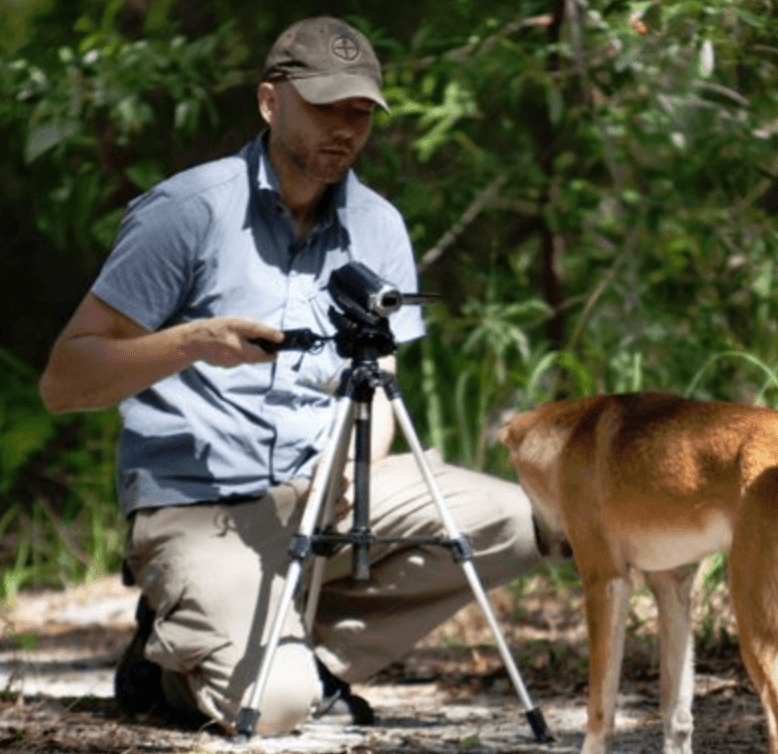 Rob Appleby
Rob Appleby
14 June 2023 10:00am
Cuddelink Camera Issue?
12 June 2023 4:33pm
Camera-trapping provides new insights on scent marking in the large-antlered muntjac
12 June 2023 5:30am
New insights into the behavior of the large-antlered muntjac, a critically endangered deer species in Southeast Asia, are revealed through camera-trapping, shedding light on scent marking as a communication method used by these secretive ungulates and its potential role in territoriality and mate assessment.
Wildlife Monitoring Engineer
8 June 2023 4:54pm
Camera Traps to monitor direct seeding reforestation
5 June 2023 10:17am
Looking for AI volunteer positions
24 May 2023 5:41am
24 May 2023 3:45pm
Hi Donya! You might check out the Conservation Tech Directory to see what projects/organizations/tools best align with your interests and skills.
Scientists step up hunt for ‘Asian unicorn’, one of world’s rarest animals
18 May 2023 6:25pm
The saola, also known as the 'Asian unicorn,' remains one of the world's most elusive and rare animals. Conservation organizations, such as the Saola Working Group, operating in Laos and Vietnam, are conducting extensive searches using camera traps and exploring new methods like training dogs to detect saola signs and developing rapid DNA field test kits in order to save this remarkable creature from extinction.
Camera trap pics of rare species in Vietnam raise conservation hopes
18 May 2023 6:17pm
Camera traps installed in Vietnam's Phong Dien Nature Reserve have yielded remarkable images of rare and endangered species, igniting optimism for biodiversity conservation in the region. Among the captivating photographs are sightings of muntjac deer, the crested argus, Annamite striped rabbit, and Owston's palm civet. The camera trap images serve as a testament to the presence of these elusive creatures, fueling hope for their conservation.















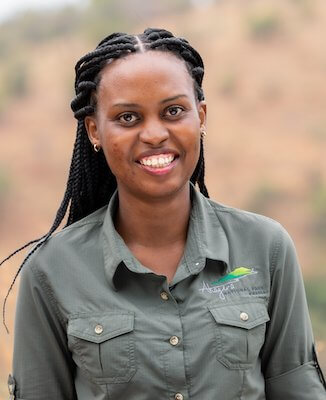































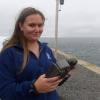










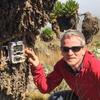

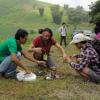

28 July 2023 7:43pm
Hi Sol,
For my research on fish, I had to put together a low-cost camera that could record video for several weeks. Here is the design I came up with
At the time of the paper, I was able to record video for ~12 hours a day at 10 fps and for up to 14 days. With new SD cards now, it is pushed to 21 days. It costs about 600 USD if you build it yourself. If you don't want to make it yourself, there is a company selling it now, but it is much more expensive. The FOV is 110 degrees, so not the 360 that you need, but I think there are ways to make it work (e.g. with the servo motor).
Happy to chat if you decide to go this route and/or want to brainstorm ideas.
Cheers,
Xavier